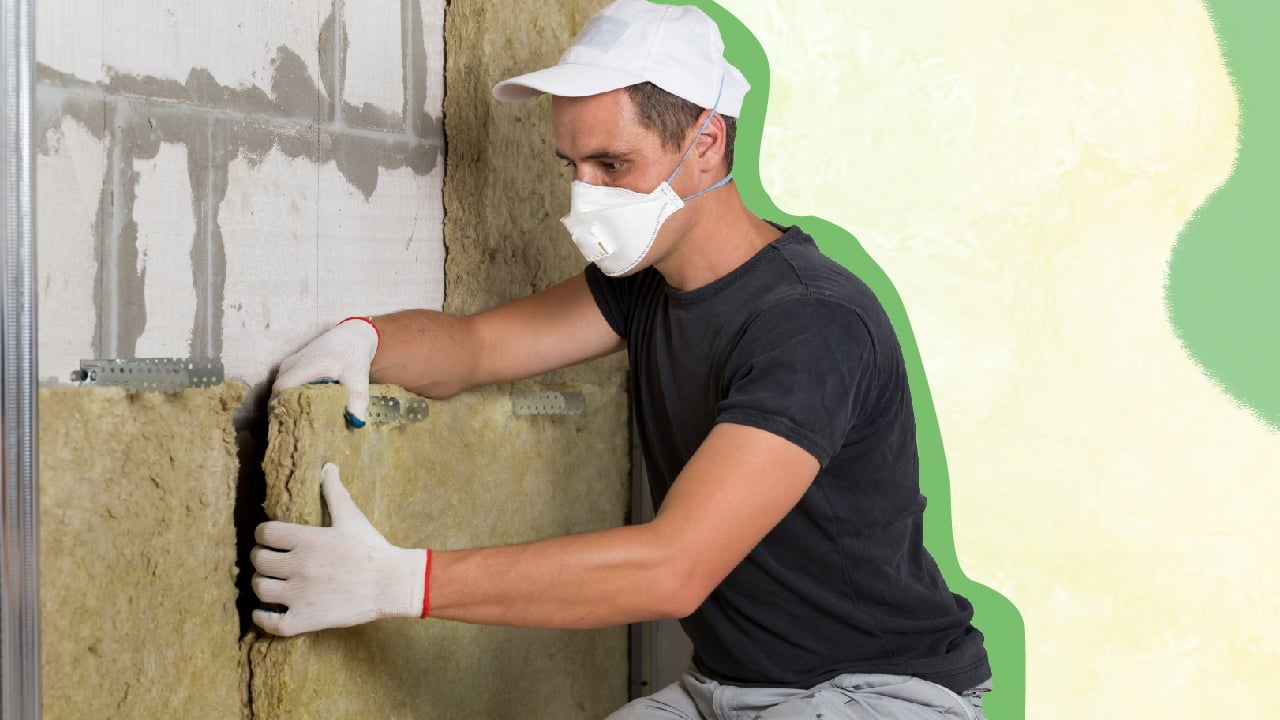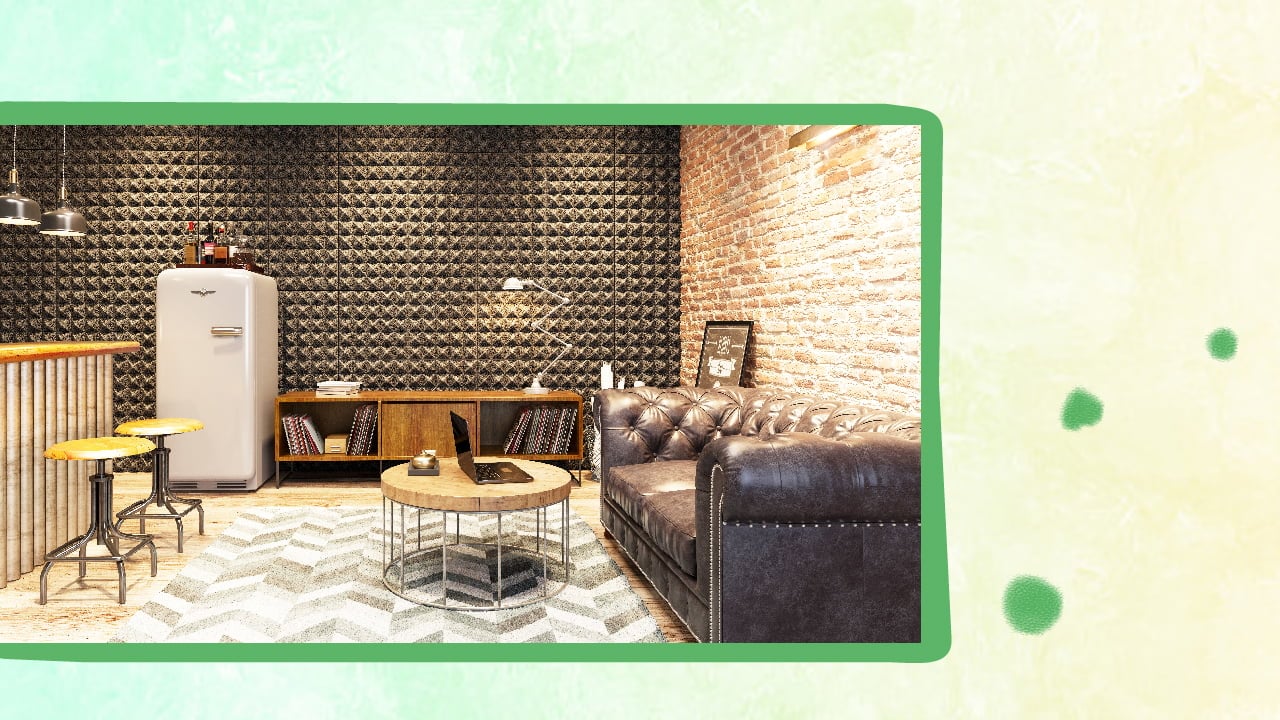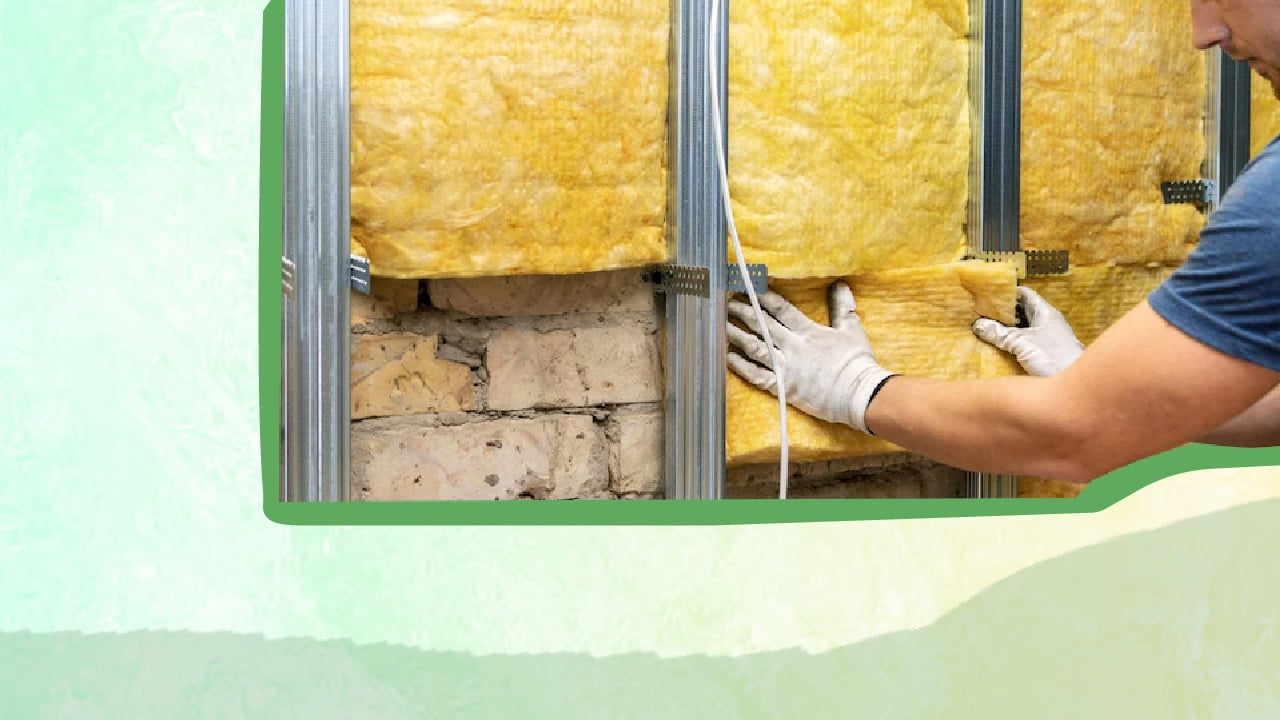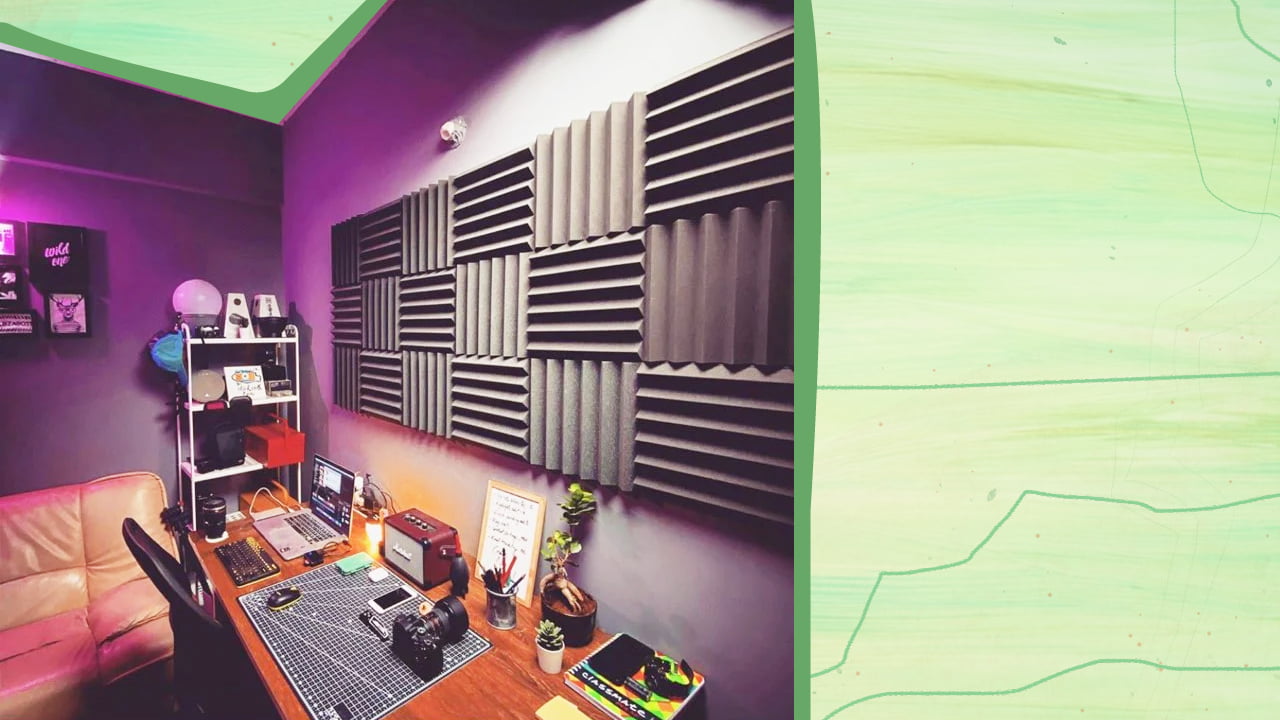 Reviewed by
Anton Giuroiu
Reviewed by
Anton Giuroiu
It may cost you between $500 and $10,000 to soundproof your rooms. However, different factors need to be considered for setting the soundproofing budget. These include the room size, the type and number of rooms, materials used, sections of the room that need soundproofing, and labor costs. One of the most important factors is how much sound we need to prevent from entering or leaving.

The levels of sound pollution are on the rise nowadays. Because of this reason, soundproofing your rooms has become a necessity.
In fact, that is the only way you can get some peace at home. Or else you will lose your sleep from all the external noises and keep your privacy at stake!
But the question many people have is - how much does it cost to soundproof a room? That’s what this guide is all about, so read on…
How Much Does It Cost to Soundproof a Room?

The Basics Of Soundproofing A Room
Before I get to the main discussion, let me give you a quick rundown of what soundproofing is. It is essentially a process to minimize or eliminate the propagation of sound. In other words, it blocks all external sounds from entering the room and prevents the sounds inside the room from going out.
You can soundproof any room in your house if you wish. However, it is most common for rooms that are frequently lived in, such as the bedrooms and living areas. On that note, you can soundproof different parts of a room as well, such as the wall, ceiling, floor, door, window, and even the curtain.
As a matter of fact, you will need to insulate these parts individually if you want to make your whole home soundproof. But if you want to make any single component soundproof, you can do that too.
How Does Soundproofing Work?
In order to understand how it works, you will need to delve a little bit into the science of acoustics. Any sound that you hear inside a room is a result of acoustic vibrations of a particular frequency reaching your ears. However, the source of these vibrations may vary, which gives rise to two types of noise - airborne noise and impact noise.
Airborne noise is the one that is generated from ambient sources, such as people talking, dogs barking, watching TV, and listening to music. On the other hand, impact noise is generated when two surfaces or objects strike each other. Some examples of impact noise are the sound of walking, using a drilling machine on the wall (this is a combination of airborne and impact), bouncing a ball off the floor, and so on.
It is a known fact that a sound wave travels faster through solid objects like walls than through the air. Therefore, the sound vibrations from an impact noise can travel directly through the walls. In contrast, the vibration generated from an ambient noise source travels through the air before reaching the walls or floor of your room.
The basic goal of soundproofing is to eliminate both types of noise. And because of that, the process involves using soundproofing materials to block the propagation of acoustic vibrations. In other words, these materials absorb the noise to give you a quiet experience inside the room. Conversely, it prevents any sound from leaving, meaning that you can listen to your favorite music or reorganize your room without bothering the neighbors.
Why Should You Soundproof Your Room?
Soundproofing your room is necessary because it gives you (and your neighbors) a peaceful environment to live in. Besides, it ensures that your apartment is compliant with the sound transmission class (STC) ratings.
As per the International Building Code 2021, a building needs to have an overall STC rating of 50 to ensure compliance. Thus, if your apartment has an STC rating below that, it is not compliant with soundproofing regulations and can land you in legal trouble. So, if you wish to avoid that, you should make your room soundproof as soon as possible.
Which Parts Of Your Home Need Soundproofing?
I have already stated that you can soundproof different parts of your room, as well as the different rooms of your house. In fact, it is a great idea to soundproof your entire apartment in one go. However, doing so can be an expensive affair, and your bank account might not allow it.
So, it’s a good idea to soundproof some sections first and deal with the remaining parts at a later time when you have the money and resources. That way, you can manage the process better without going broke.
In that context, many homeowners may feel some degree of skepticism about soundproofing their doors, windows, and curtains, considering that they occupy very little area in your home. On that note, people who live on the first floor and on the topmost floor may feel skeptical about soundproofing their floor and ceiling, respectively.
Likewise, some people may think that soundproofing basements, garages, and attics are unnecessary since they are not lived in as much as the other rooms.
To a certain extent, I can understand their skepticism. But if you want to be on the safe side, it is best to soundproof all of them. Each of them contributes to improving the STC rating of your apartment, and the higher the rating, the better it will be for you.
How Much Does It Cost To Soundproof Your Room?

Now that you have some idea about soundproofing, it’s time to get to the business end of the topic. To make your home soundproof, you will need to spend between $500 and $10,000. In this regard, the costs of soundproofing may vary greatly based on different factors. I have listed each of these factors below.
- Room size
- Acoustic performance requirements
- Number of rooms
- Materials used
- The section of the room
- Labor requirements
The first two factors are pretty self-explanatory, and they are the first things to consider when looking to undertake a soundproofing project.
All of these factors are interrelated, and they need to be considered together to determine the cost. In other words, you cannot afford to ignore any of them, as that can drastically impact your budget calculations.
Keeping that in mind, I have discussed the soundproofing costs in greater detail in the subsequent sections.
A. Soundproofing Costs By Size
The cost of soundproofing a room depends on its size, which is usually measured in square feet. For soundproofing a finished room, the standard rate is roughly $10 to $30 per square foot of space. On the other hand, for a room that is under construction, the average cost of soundproofing varies between $12 to $25 per square foot of space.
Therefore, after measuring the dimensions of your room, you can easily calculate how much it will cost you. It goes without saying that you will need to shell out a lot more money for soundproofing a large room than a small one.
Of course, that is not the only factor you need to consider while making the budget. You also need to take into account the overall complexity of the project. For instance, soundproofing one square foot of area on your ceiling requires more effort than soundproofing the same area on your wall. So, the costs for the former will naturally be higher than the costs for the latter.
B. Soundproofing Costs By Rooms
The next factor to take into account is the room type. Some rooms, especially the ones that are lived in more, require greater soundproofing than others. For example, your bedroom needs a lot of soundproofing since you use that room for sleeping. In contrast, soundproofing your attic will cost a lot less since that room is not used as much.
With that in mind, here are the price ranges for soundproofing the different rooms of your house. Note that these are only the average prices, which means that the costs you need to bear might vary depending on the size, complexity, and other factors.
1. Costs For Soundproofing Bedrooms
The bedroom is one of the most common areas that people soundproof in a home, and with good reason. It is a place that is used for sleeping, so it needs to be free from outside noise and disturbance.
For that purpose, you need to soundproof the floor and the ceiling in addition to the walls. Likewise, it is important to soundproof the doors and windows of the bedroom to ensure maximum sound insulation.
Depending on the size and the number of tactics used, soundproofing a typical bedroom may cost between $500 and $5000.
2. Costs For Soundproofing Garage
Another area of a home that is commonly made soundproof is the garage. Besides storing your vehicles, a garage is often used as a utility room for do-it-yourself (DIY) projects. Apart from that, many people use their garages to practice music. All of these activities generate noise that might bother your neighbors, which makes it important to soundproof this room.
Soundproofing a whole garage can be an expensive affair because the garage typically does not have any sound-absorbing materials. This means that you will need to soundproof walls, doors, and the floor of the garage. If there are any windows, you will need to soundproof them too. All in all, if you want to soundproof your garage fully, it might cost you between $1000 and $5000.
3. Costs For Soundproofing Entertainment Rooms
This is the part of your home that you use for entertainment purposes. It generally contains a home theater, a music system, a gaming setup, and other means of entertainment. So, it can get quite noisy inside, which makes soundproof insulation essential for this room.
Usually, the level of soundproofing will depend on how you use the room. If you use it only as a home cinema, the level of soundproofing will be slightly different than what you need for soundproofing a gaming room.
On the contrary, if you want to soundproof the room for music, you will need to consider the acoustics of the room. This way, you can avoid disturbing your neighbors and ensure good sound quality within the room.
In any case, soundproofing your entertainment room can cost anywhere between $1,000 and $10,000.
4. Costs For Soundproofing Bathrooms
Do you consider yourself to be a bathroom singer? If you do, then it might be a good idea to soundproof your bathroom. Now, I am not judging your musical prowess, but your bathroom singing might not be appreciated by the neighbors, especially if they are trying to get some shut-eye.
Thankfully, soundproofing your bathroom shouldn’t be a particularly expensive affair, considering a bathroom is relatively smaller in size than the other rooms. However, to achieve complete sound insulation, you might want to install soundproof windows and a sliding glass door, among other things. Such components are a bit pricey, which can increase the costs.
No need to worry, though, for the prices will not be as high as other living areas in your home. In that context, the cost of soundproofing your bathroom may range between $500 and $3,000.
5. Costs For Soundproofing A Home Gym
If you have a gym at home, then it is a good idea to soundproof that room. A home gym typically contains mechanical equipment that generates a fair bit of noise. Also, many home gym users have sound systems to work out while listening to music, which creates even more noise. Besides, you wouldn’t want your neighbors to hear you huffing and puffing in the gym, believe me!
That is why most soundproofing projects for the gym should focus on the walls, ceiling, and floor. The floor, in particular, needs to have adequate soundproofing, as impact noises from gym equipment like weights will travel directly through it.
With all things considered, soundproofing the gym will cost you between $500 and $7,500, depending on the size and the type of gym activities.
6. Costs For Soundproofing The Kitchen
Cooking and its associated activities make a lot of noise, which makes it essential to soundproof the kitchen. You can stop sounds from entering or exiting the kitchen by installing soundproof drywall, insulated windows, and acoustic panels on the walls and ceiling. Some of these components can be a bit expensive, so you might need to dish out between $1000 and $6000 to make your kitchen soundproof.

C. Soundproofing Costs By Materials
Besides the size and number of rooms, the materials used play a major role in determining the costs. In this regard, I am referring not only to the soundproofing material but also to the materials used in the room. Both of them need to be considered if you are looking to soundproof your whole home.
Each part of your home is made from a different material. The sound waves travel differently through each material, which is why the soundproofing solution needs to be implemented accordingly.
For example, the floor is usually made from wood, tile, or stone, and in some cases, even concrete. The first few materials are not very good at absorbing sounds, and as a result, they will require greater soundproofing.
On the other hand, the walls and ceiling are normally made of concrete slabs or drywall panels. These materials can absorb sound to a greater extent, which means that the level of soundproofing required here will be less.
That is why it is important to consider the material used in the construction of the room, as it can help save a lot of money. With that being said, below are some of the most common materials used in soundproofing projects.
1. Drywall
Drywall is the material that is most commonly used for insulating existing walls and ceilings, as well as floors in some cases. Soundproofing drywall sheets are typically made from specialty materials that are acoustically enhanced and have a high density. Some manufacturers may use multiple layers of insulating materials to reduce sound leaks. In any case, it will cost around $30 to $40 per sheet of drywall.
For homes that have paper-thin walls, it is advisable to use double drywall to eliminate the propagation of sound. In that case, the costs will double, so you need to keep that in mind while preparing the budget.
2. Acoustic Foam Panels
Acoustic foam panels are commonly used for soundproofing walls and, in some cases, the ceiling too. The polypropylene foam materials absorb all airborne noises and minimize the intensity of impact noises traveling through the wall.
Such material is relatively inexpensive, and it will cost you around $2 to $3 per square foot of panel. Thus, it is a great soundproofing method if you are on a limited budget.
3. Acoustic Tiles
Acoustic tiles are generally made from sound-insulating materials like natural rubber or foam, which makes them different from conventional tiles. They can be used for walls, ceilings, and floors and can eliminate most airborne and impact noise.
The tiles are square-shaped since it helps make the installation process easier. There are different tile sizes available today, ranging from 4-inch square tiles to 20-inch square tiles. On that note, a 20-inch square acoustic tile costs around $10 to $20.
4. Mass Loaded Vinyl
Mass-loaded vinyl, or MLV, is a highly effective soundproofing material that is typically installed on the walls and the floor. It is often made from polyvinyl chloride (PVC) and comes in the form of rolled sheets that need to be placed over the wall or the flooring. They can also be placed along the inner linings of the walls and floor, but doing that requires a lot more work.
On average, a single roll of MLV covers 50 square feet of space. Each roll costs between $100 and $200 overall, or $2 to $4 per square foot.
5. Carpets
Carpets are used to soundproof floors, and they are fairly effective at eliminating most airborne and impact noise. They are made from sound-insulating fabric materials arranged in the form of a shag pile, which determines the carpet thickness. The thicker the carpet is, the more sound it can absorb, and vice versa. In any case, using carpets for your floor will cost you $3 to $10 dollars per square foot.
Tip
If the floor is too thin, you can spend a little extra to purchase a soundproof carpet pad. When placed below the carpet, it can enhance the insulating capabilities of a carpet considerably. Such a pad is made from natural rubber or vinyl, which are some of the best sound-insulating materials around.
6. Soundproof Curtains
Sound-dampening curtains are commonly used on the doors and windows of a house. They are made from sound-absorbing fabrics, similar to carpets. Likewise, the thickness of the curtain determines how effectively it can block out sounds.
They are ideal for use in living areas and in the room of a child. As for the costs, they can vary based on the thickness and quality of the fabrics used. But on average, buying a soundproof curtain will set you back by $100 at most.
D. Soundproofing Costs For Different Parts
Now it’s time to discuss the costs of soundproofing based on what part of the room you wish to work on. Such an approach allows you to soundproof the most concerning areas first. What’s more, it is a great strategy for those who have a short budget.
In that context, the key areas that you need to consider are the walls, floor, ceiling, doors, and windows. The soundproofing methods and materials for each section are different, which gives rise to cost differences for each of them.
Some of these methods are only used for a finished room, while others are implemented when the room is under construction. The methods used for the former are usually a lot cheaper but are relatively less effective. On the contrary, the methods used for the latter are a bit more expensive but are highly effective in blocking most sounds from the room.
Anyways, I have discussed the costs for soundproofing different parts of the room below.
1. Wall Soundproofing
The most important area of the room that needs soundproofing is the wall. You can choose to soundproof the walls either during construction or when the room is finished. If you choose the former, you need to use products such as Rockwool sound insulation or mineral wool batts.
These are stuffed between the wall frames, which helps to provide insulation against sound. The first option will cost you $1 to $2 per square foot, while the latter will cost you $2 to $3 per square foot.
You can also opt for acoustical caulk to seal the wall layers. It acts as an adhesive as well as a soundproofing sealant, which means you get multiple uses. That said, you will require roughly 28 to 30 ounces to cover a medium-sized wall, and it will cost you around $15 to $30. Apart from that, you can opt for double drywall during construction, which I have already discussed before.
If you want to insulate a finished wall, you can go with acoustic foam panels and tiles, both of which I have mentioned in the previous section. As an alternative, you can go with soundproof paint, which absorbs sounds much better than regular paint. It costs $30 to $40 per gallon or $2 to $4 per square foot.
Overall, it will cost you anywhere from $100 to $350 to soundproof a single wall.
2. Ceiling Soundproofing
The average cost to soundproof the ceiling of a room is around $200 to $500. It may vary based on the methods chosen, the area, and labor costs.
Similar to the walls, you can choose to soundproof the ceiling either when it is finished or when it is under construction. If you choose the latter, you can follow methods that are similar to soundproofing a wall. In the case of the latter, you can choose between installing acoustic foam panels or mass-loaded vinyl.
Another alternative is to use soundproof fiberglass panels, which will cost you $1 to $4 per square foot. In addition to damping sound, it makes the ceiling look visually attractive, especially if you have a dropped ceiling. That ultimately makes it an appealing choice for many homeowners.
3. Floor Soundproofing
Just like the walls and the ceiling, you can choose to soundproof the floor either during construction or when it is finished. Whichever option you choose, it will cost you between $200 and $2000 to soundproof the floor entirely. Of course, the area, labor costs and the number of rooms need to be considered too, as usual.
If you choose to soundproof the floor during installation, you can opt for a soundproof floor underlayment, which costs less than $1 per square foot. You can insulate the floor joists and subfloor with the underlayment, which eliminates all types of sound.
Conversely, for a finished floor, you can use floor carpets, rugs, or interlocking mats, which offer the best degree of soundproofing at a relatively low price. You can get floor mats and rugs between $1 and $3 per square foot.
4. Door Soundproofing
The average cost of soundproof doors can vary from $50 to $3,000. You can purchase acoustic door thresholds, which cost around $50 to $100 per door. Apart from that, you can use door sweeps or a moving blanket to prevent any sound from getting in or out. Both of these options will cost between $60 and $120 per door.
If you want complete soundproofing and have the funds for it, you can use acoustic panels. It will cost a few hundred bucks, depending on the materials and the number of doors you have.
5. Window Soundproofing
The windows are typically made from glass panels embedded in a wooden or metallic frame. These materials have poor soundproofing capabilities, which means that you will need to make a significant investment to soundproof your windows.
If you are on a budget, though, you can opt to use soundproof curtains, which I have discussed before. Based on your choices, the process may cost you anywhere between $100 and $1500 per window.
E. Labor Costs For Soundproofing
A soundproofing project is not an easy task to undertake. It needs to be done by qualified soundproofing contractors, or else it might not be as effective. Because of this, the costs of labor become a crucial aspect to consider.
In most cases, you will have to pay labor costs by the hour. So, it is in your best interests to get it done as quickly as possible. However, if the soundproofing project requires extensive work, that might not be possible.
Most contractors today charge between $15 and $60 for labor. Based on that, you can prepare a budget for your soundproofing project.

How Much Does It Cost To Sound Proof A Room Final Words
By now, I am guessing you have gained a pretty good idea about soundproofing costs.
In addition to the ones mentioned above, you need to take into account any complex structures you have since these require extra work. For instance, if you have lamination on the floor or wall, it needs to be removed before the actual work can start.
Before I wrap up, let me give you some tips to save money. Try to purchase the building insulation materials in bulk. By doing that, you can avail discounts and offers available only on mass purchases.
Similarly, you should do some research before hiring a contractor. That way, you can get quality service at an affordable cost.
